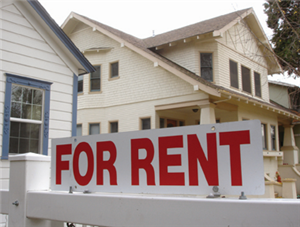 Not so long ago, pricing rental properties involved a largely “set it and forget it” approach.
Not so long ago, pricing rental properties involved a largely “set it and forget it” approach.
The rent would be determined, often based on arbitrary numbers or a gut feeling, and then it wouldn’t be adjusted again until the landlord felt the need to raise it.
Today though, it’s a different story. The rental market is a lot more competitive, especially in key markets, and renters are constantly in search of the best deal. Access to tools and technology – including live market updates – is available to both tenants and landlords, enabling the tenant to find the best deal and empowering the landlord to form pricing strategies that are much more competitive.
For landlords, careful pricing is important. It keeps you competitive and allows you to find the best price for your property – helping you to avoid overcharging and driving renters away, or underpricing and selling yourself short. It also helps you to rent your property sooner, preventing it from languishing on the market for too long.
But setting prices can be confusing, and there’s a world of pricing methods and data for you to wade through. If you’re confused, don’t worry. We’ve muddled through the data and simplified it for you. Let’s take a look at two pricing strategies – both dynamic, and standard pricing – and see how you can quickly and efficiently set your rent and keep your rental competitive.
Dynamic pricing for rental rates
 Dynamic pricing involves using software to track the current market rental value for a property.
Dynamic pricing involves using software to track the current market rental value for a property.
Online platforms like RentRange use algorithms to track apartment supply and demand and operate much like airlines and the hotel industry do, providing up-to-the-minute pricing that’s optimal for your area.
This cutting-edge pricing approach is high-tech, giving you a simple way to stay on track. However, some landlords may feel that using software to set rental prices is too impersonal – or in some cases, downright wrong. After all, pricing algorithms aren’t always accurate.
A quick look at property values online, for example, often reveals that the estimated market value for homes is considerably off.
Still, for time-crunched landlords in competitive neighborhoods, this type of approach often makes the most sense. And in hot markets, where values can change considerably from week to week – or even daily, keeping your rental values at the sweet spot is especially crucial for getting the most for your property.
“A decade ago, apartment complexes would generally set a price for each type of unit – say a two-bedroom, two-bath floor plan – and that would be that,” writes Andrew Dunn of The Charlotte Observer. “Possibly, a unit on the top floor could be $10 more.”
But with dynamic pricing, that’s no longer the case. With a dynamic pricing model every unit could easily have its own price – one that fluctuates by the day.
Standard pricing for rental rates
For many landlords, the tried-and-true method of pricing still makes sense. Especially for those who have one or two properties or for rentals in areas that may not experience market fluctuations as drastically as urban areas.
Still, keeping track of market changes that impact the value of your rental will help you stay competitive. This means getting the most out of your rental, while not attempting to push a price so high that potential tenants are driven away, causing your rental to sit empty.
According to The Wall Street Journal, professional investors generally like to charge at least 1.1 percent of a home’s value as the monthly rent. For a $100,000 home, this equates to $1,100 per month.
Homes with values that exceed $100,000 though, are often rented at less than 1.1 percent of the home’s value due to fact that the rental pool is smaller at the top.
“So for a home that costs $350,000, you may only be able to charge .8 percent of value, or about $2,800 a month,” explains June Fletcher of the WSJ.
This is a good starting point, but it’s not all-inclusive. Keep in mind that what you paid for a home and the percentage that it will rent for are often two separate things. There are other factors that will impact a property’s rentability – and price, as well.
Here are some factors that you should look at when pricing your rental.
Factors that impact your property’s rental value:
- Property Condition
Property values can vary considerably, depending on the property’s condition. Everything from the age of the property, the quality of workmanship and the finishes – like marble countertops, crown molding and high ceilings – will make a property more valuable. Exactly how valuable will depend upon how desirable the feature is – and whether the neighboring properties lack this feature. A recent remodel or upgrades can also add to the home’s value. - Location
The property’s location, as well as proximity to problem areas, can drastically impact its value. A power plant has a significant impact on nearby homes, according to a University of California at Berkeley study, and being within two miles of a plant decreases a home’s value between 3 and 7 percent. Homes near landfills lose 6 to 7 percent of their value. - Other homes in the area
If your property is the nicest on the block, you may find that the surrounding homes can drag down its value. On the other hand, if your home is surrounded by high-value homes, it can help to raise your property’s value, as well. - Type of home
Single-family homes often rent for more than multi-unit complexes, but not always. The exception is upscale apartments, which can easily rent for considerably more than homes in the suburbs. The layout and floor plan need to be considered, as well. A modern, open floor plan is more desirable than a railroad-style home. - Property appreciation
Properties appreciate, or in some cases may depreciate, over time. When the lease expires, or the tenant moves out, it’s important to check up on the value of your property to give you an idea on where to start with rental pricing.
Changes in the housing market that impact your rental value
- Cost of renting vs. buying
As a general rule, when the cost of renting exceeds the cost of buying, demand for rentals goes down. Rising interest rates can make buying a home less attractive – and renting a more viable option.
Rental vacancy rates
Finally, rising demand for rentals creates a drop in vacancies, which pushes the price up. While this number varies considerably from market to market, in January, the national rental vacancy rate was at a 20-year low. While a number of factors can influence this, some of the main factors to look at are local job growth, new builds in the area and the formation of new households.
Keep informed
Another way to gain knowledge on pricing is by getting in touch with local agents or property managers. These professionals are well-versed in property values and keep up with the changes in the market. They would be able to tell you whether your rental prices are on track.
You could also take a look at what other properties are going for in the local area – although this isn’t a definitive gauge since, as we’ve seen, prices vary considerably depending on a number of factors.
Finally, before setting a price, make sure you’ve calculated your estimated return on investment. You’ll want to add up your projected expenses, including the mortgage payment, insurance, maintenance and taxes.
In the end, it’s important to keep current with the local housing and job market – as well as rising interest rates. Choosing a rate that’s competitive allows you to get the best price possible for your property, while ensuring that your property rents quickly, helping you to keep your vacancy rates down.























0 Comments